Why advertising Mark?
It all happened by accident.
I was quite good at drawing as a kid and my Uncle had gone to Art School and had ended up as a Silversmith.
The Dentons weren’t that imaginative (they all worked in the Family Scrap business) so ‘good at drawing’ meant that I should go to Art School too.
My Mum thought I could get a job as one of those people who paint the patterns on the edge of plates (although I didn’t like the idea of leaving home and living in Stoke on Trent).
Did you go to Art College?
I couldn’t get into a proper Art College because I didn’t have enough O-Levels, it was only a chance conversation with a stranger that pointed me in the direction of The Ravensbourne School of Vocational Studies and a three-year course in graphic design.
I got a job as a paste-up artist first at Knitting Digest and then at the now defunct Bridge Advertising.




Who rejected you before you got in?
Bridge Advertising were crap, but my boss used to work at Colman Prentis & Varley, who were a pretty creative agency years earlier and he got me all fluffed up with tales of John Webster and D&AD, (which I hadn’t heard of up until that point).
I went for a couple of interviews armed mainly with my magic marker visuals, not ads, just illustrations.
I remember being turned down by Masius and a Creative Director at Euro who looked through my book and said ‘it doesn’t make my knob go hard’.
The Burnett’s break happened when the Head of Typography Mike Brant hired me as his assistant – he needed someone to draw up his visuals.
LEO BURNETT.
What was your first ad that got made?
Can’t remember the first, but the earliest one I can recall, that I liked, was a 48 sheet poster for Perrier.
In fact, it was the only finished piece of print I had in my folio when I left Burnett’s.
I was particularly proud of it as I’d managed to talk a famous photographer into shooting it – Barney Edwards.
I showed John Hegarty in my BBH interview; ‘I hate it’ he said as he flipped it over.
Perrier.
Honey Smacks.
What was your first good ad?
My job at Burnett’s was drawing up other people’s ideas, but I always tried to do a better one myself, I couldn’t help it.
I think I did most of my best work there but almost all of it didn’t go through.
They had an established poster campaign for Cadbury’s Creme Eggs featuring classical portraits of Kings and Queens, eating the product with lines like ‘Henry’s Eighth’ and ‘Elizabeth’s First’.
I drew up my versions; ‘Quasimodo’s Umpteenth’, ‘Bunter’s Billionth’ and ‘Dracula’s lost Count’ and that got me noticed for my writing skills.
Probably my finest line was for Maxell tapes ‘Stop taping the hiss’.


Of course it was thrown out before the marker ink dried.
The first good ad I made was for Cadbury’s, a commercial featuring Charlie Drake as a 16th century driver of a Turbo Sedan chair, powered by Creme Eggs.
I was only meant to draw some posters up and not stick my hooter into the telly, my boss was furious, but it was too late as the account group had accidentally seen my storyboard.
It was my first ad in D&AD.
Did anyone notice?
As I started to produce things I started to get noticed outside of the agency.
I made an animated commercial with the brilliant Oscar Grillo, of Klactovesedstein, featuring hungry vultures, it was for an orange drink called Quosh.
Quosh.
He was very impressed that I’d drawn a tight storyboard upfront, said that he liked my drawings, which was praise indeed coming from Oscar.
It turned out very nicely and Oscar started to show it off a bit, most notably to a bloke called Ron Collins. Now, Ron Collins happened to be one of the most famous creatives around town, the ‘C’ in WCRS, the hottest hot-shop in London.
He liked the ad and said that he’d be interested in meeting me.
The only trouble was that Ron had a fearsome reputation and I hate to admit it, but I was too scared to go for an interview, I didn’t think I was ready.
About the same time, my book was summoned over to GGT, who in my opinion were doing by far the most exciting work around, I sent it over and got a call shortly afterwards. Thinking that I was going to get an interview I excitedly turned up at their Soho offices, I was pointed at the lift by the receptionist, pressed the button, expecting to be whisked up to the creative department, but the lift doors opened and there was my lone portfolio, ready for pick up.
With no comment.



BARTLE BOGLE HEGARTY.
So far, the work doesn’t seem very BBH – how on earth did you sneak under their cooldar?
I was at Shepperton, shooting that Creme Eggs ad, and this bloke wandered in from the next stage and started talking to me.
His name was Chris Palmer.
He was so knocked out with the set that he put me forward for a job as his art director at BBH.
He’d spent his first six months working opposite John Hegarty, whose regular writer Barbara Nokes was on maternity leave, she was now on her way back.
Haymarket Publishing.
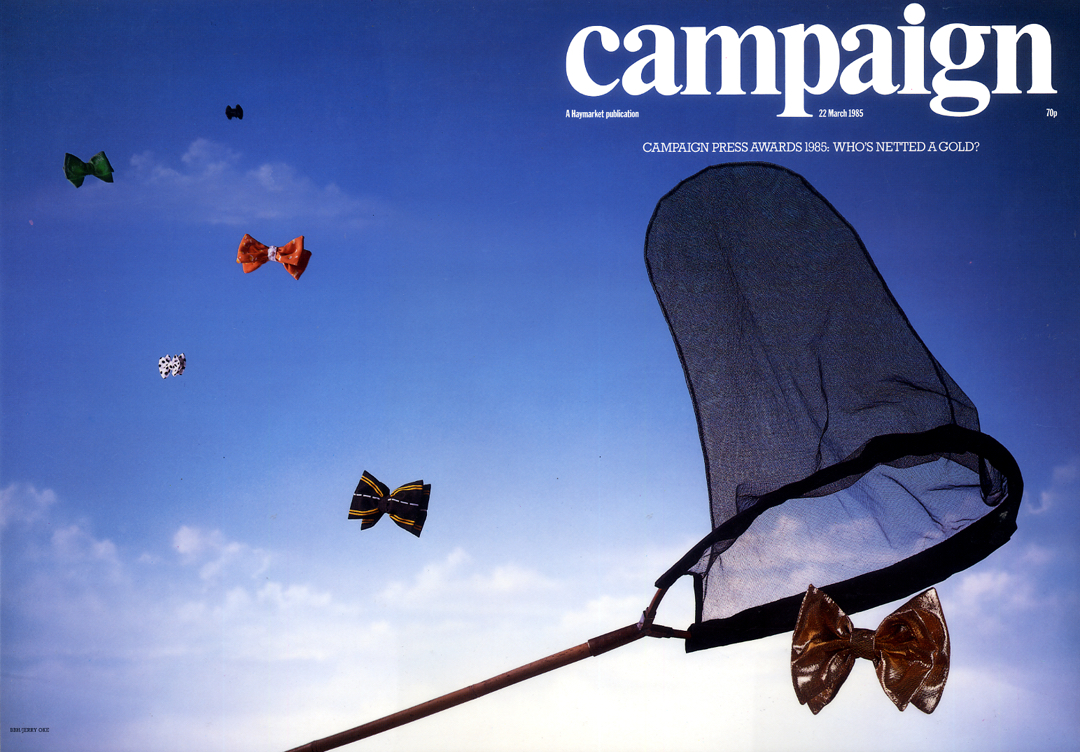
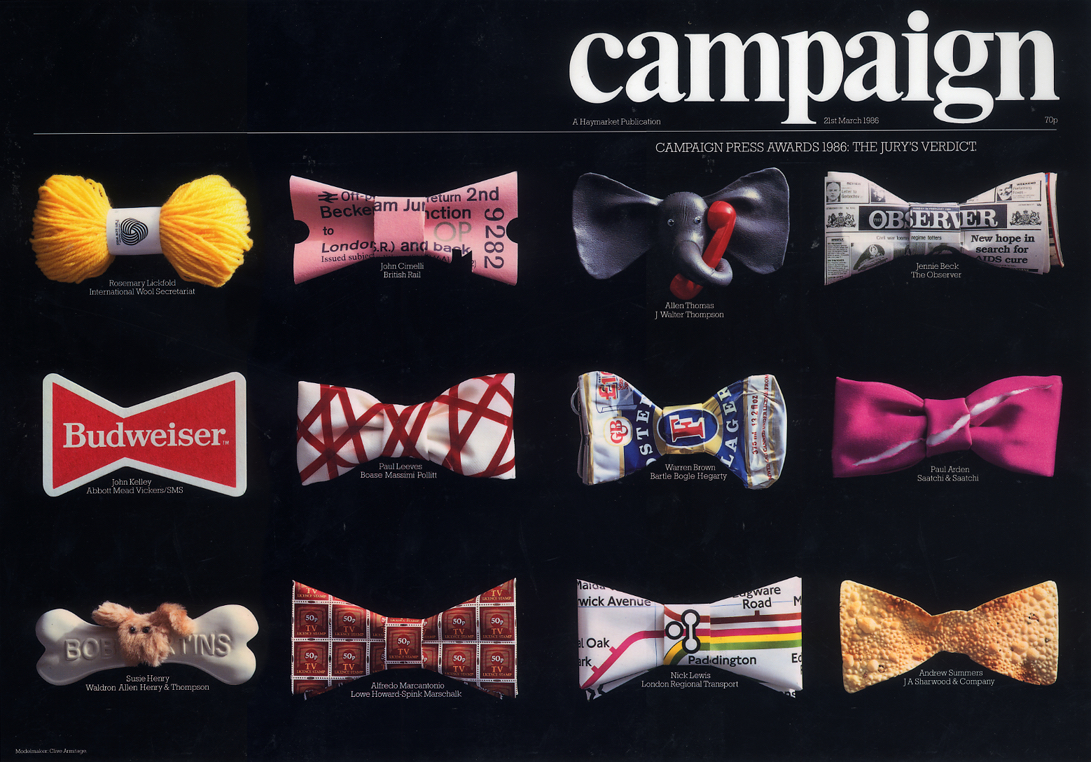
Levi’s.

The News On Sunday.

Was Hegsy scary?
I was shit scared of John Hegarty.
I was aware that wasn’t John’s first choice, I’d got the job because of Chris’s support.
My portfolio was full of rough storyboards and very little else, I certainly had no beautifully crafted print to my name.
John Hegarty was arguably the most stylish art director around town – I had to learn to art direct pretty sharpish.
St. Ivel Shape.
Why team up with a shaggy haired bike messenger with only a years experience?
I’d have teamed up with the office cat if it had got me into BBH.
Chris had only been in the business for six months, but in that time he’d won a stack of awards, including six D&AD pencils, for his work with John on Levis, Pretty Polly and Dr White’s Tampons.
It worked out pretty well though, not only did we have very similar creative sensibilities we both felt that we had to pedal hard to make up for lost time, we were both in our late 20’s – Chris had spent a lot of time as a dispatch rider, while I’d been in the studio at Burnett’s.
Burrough’s.




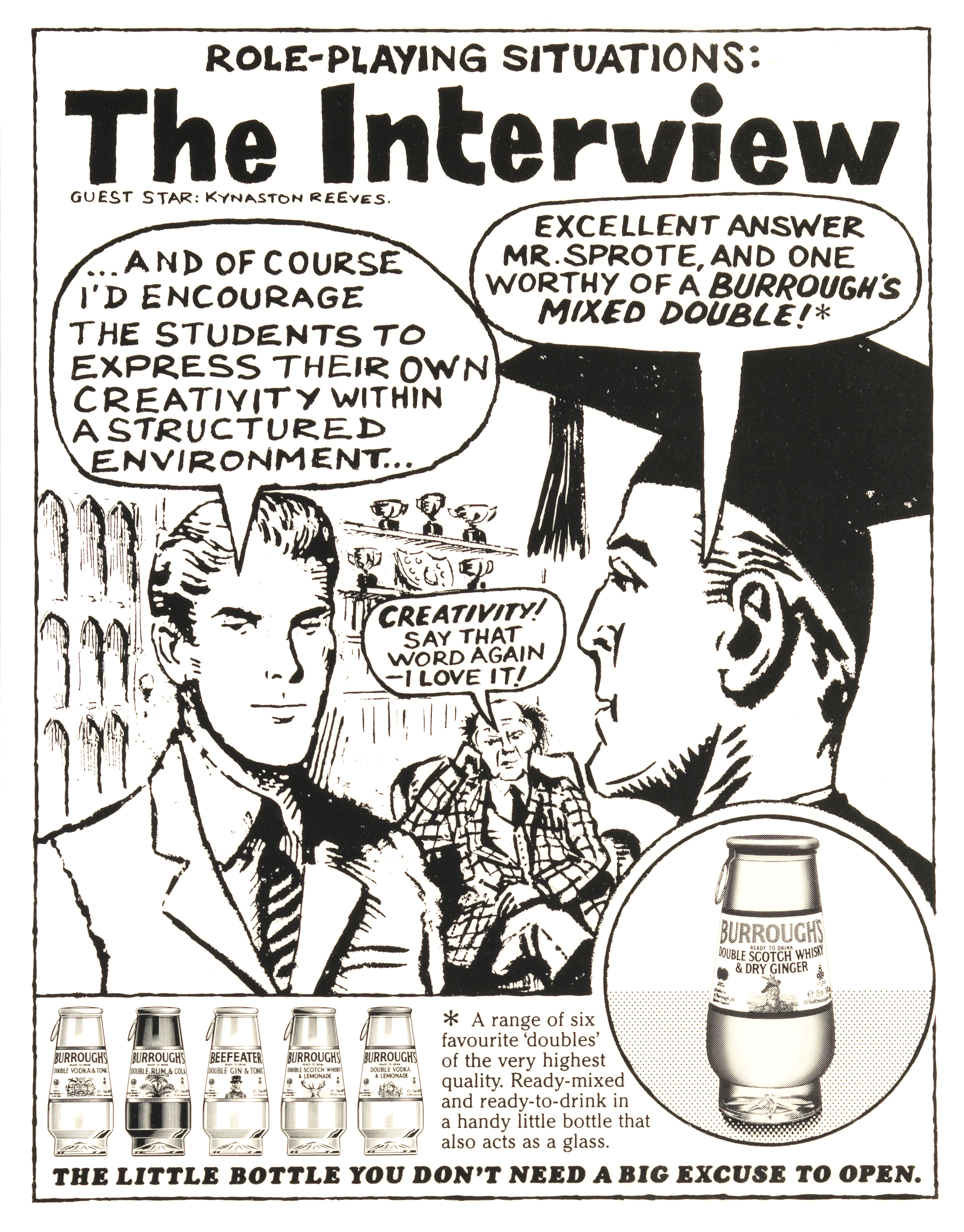
You started moonlighting to build up your tv reel?
Even at Bridge Advertising, I’d see any photographer or illustrator’s agents that called up to show off their wares.
Often trying to persuade them to help me make a spec ad.
When I got to BBH my credibility rocketed, over night, so suddenly it became relatively easy to convince visiting producers that their new director needed a pilot.
I had a portfolio full of ads that had been turned down at Burnett’s, so rather than wait for a TV brief, I kept the pot boiling with my own stuff.
Chris was every bit as keen as I was on producing extra-curricular work, before too long the pair of us were picking up awards, which attracted even more producers and photographers eager to help.
Samson Batteries.
Did any decent creatives take you guys under their wing?
No not really.
We were chucked in the deep end and allowed to make mistakes, although mistakes weren’t that popular, so we tried to make sure we got it right.
I spent untold hours studying the guard books trying to get the hang of art direction.
My visualising skill came in handy, I’d spend nights and weekends drawing and making animatics of our scripts – pretty unusual for creatives to do that.
Chris joined in too, he’s a bloody good illustrator.
Asda.


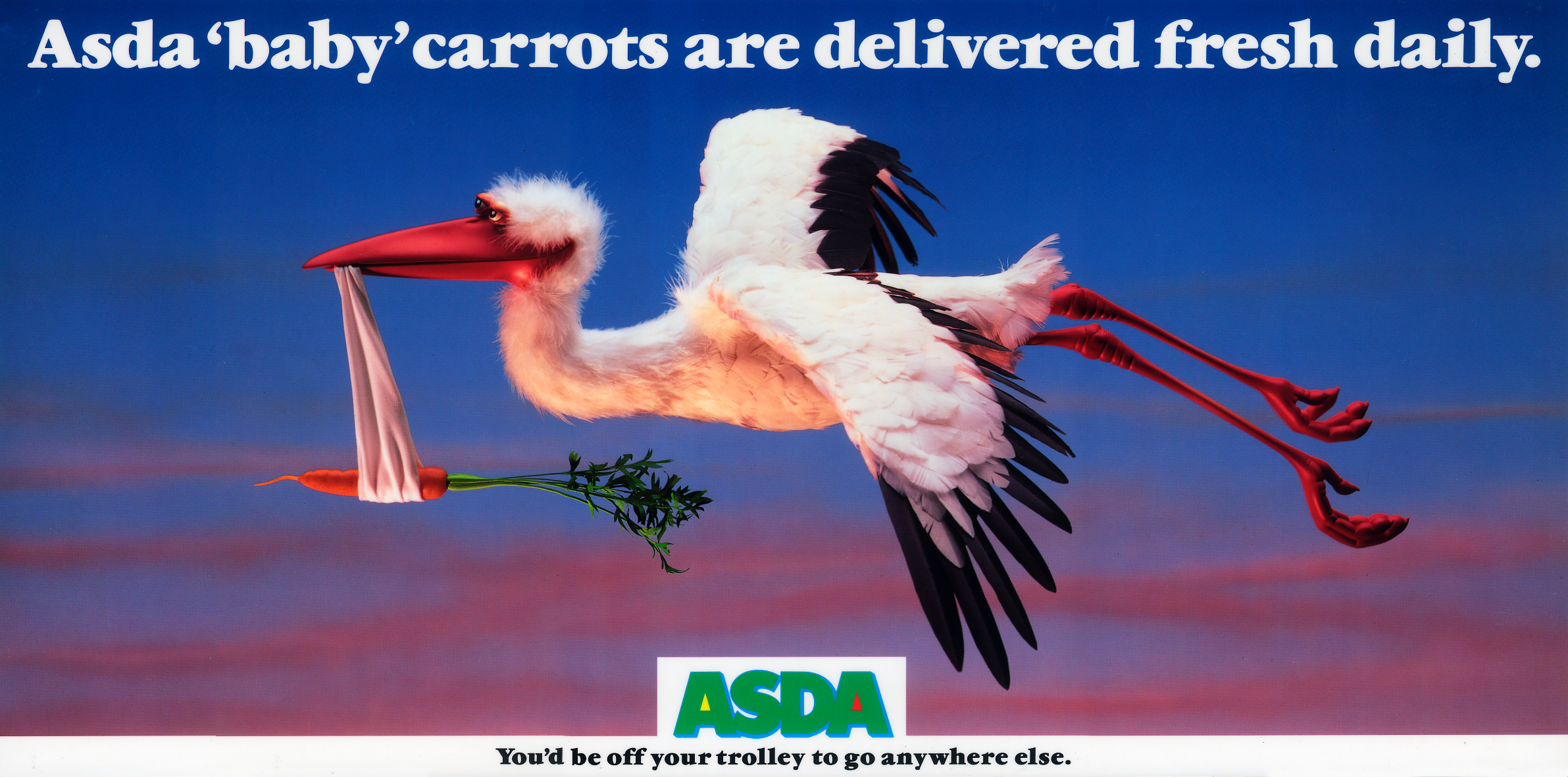
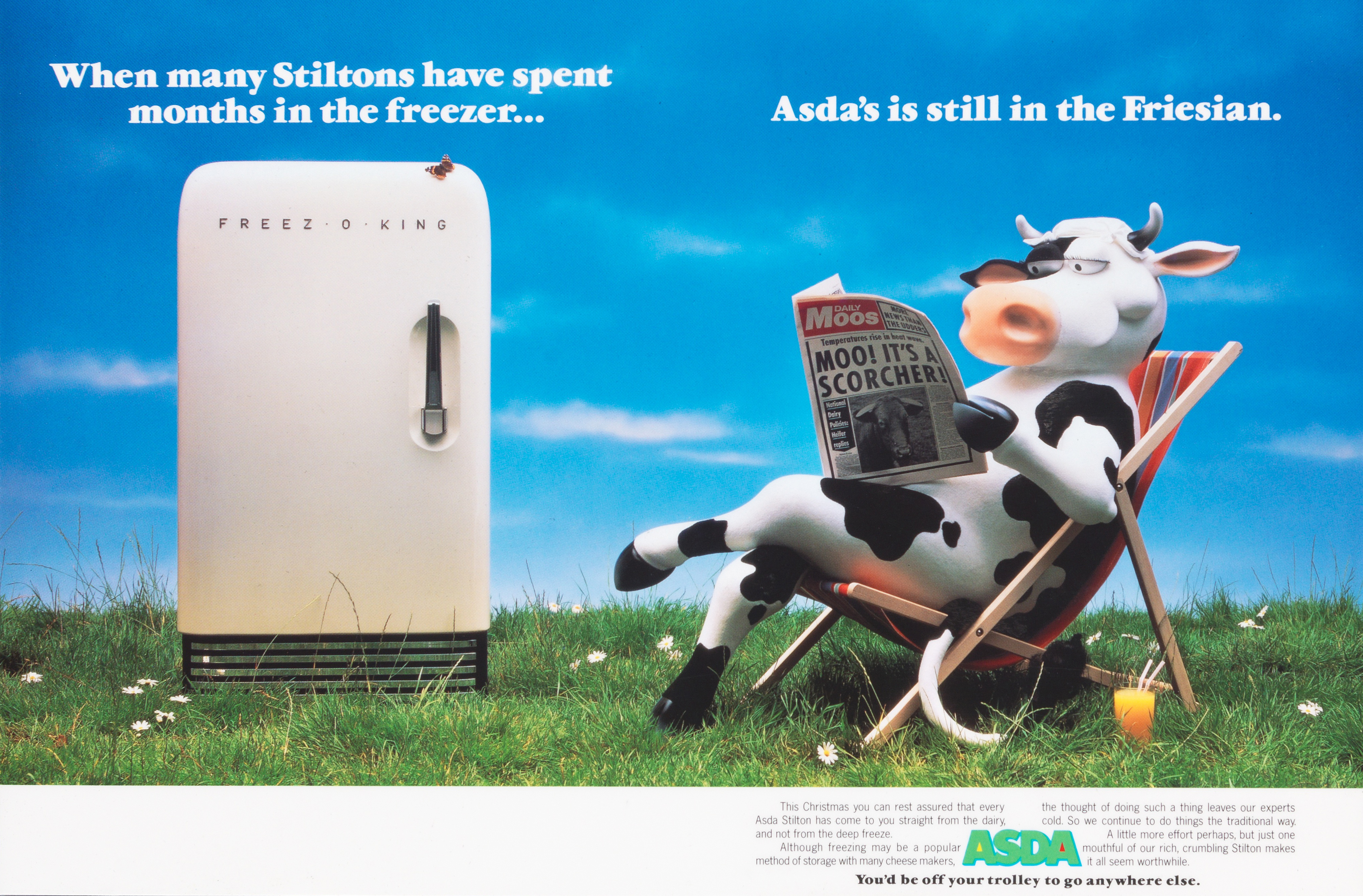

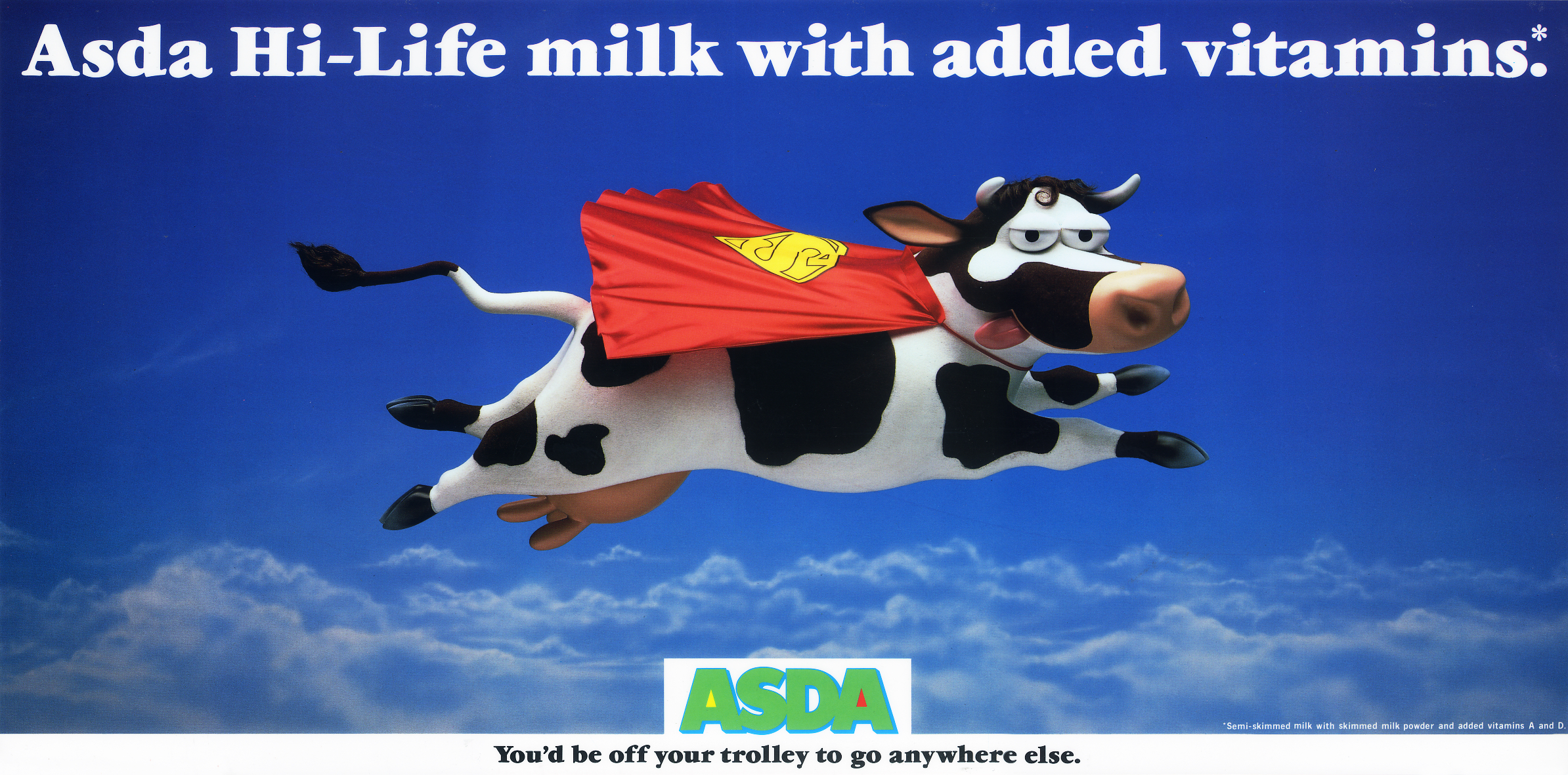 Your work from this period seems more GGT than BBH?
Your work from this period seems more GGT than BBH?
We loved the super stylish fruits of the BBH creative dept but we also used to love the brutal populist stuff that was coming out of GGT.
We tried to get a few GGT style scripts past John but I remember him saying ‘we don’t do that kind of advertising here’ and to be fair he was right, they didn’t.
Hegarty.
Trott.
Icke.
Who’s been the bigger influence?
Hard to say – they were all massive influences.
And the list could have been a hell of a lot longer.
I know how to polish my shoes correctly because I was in the Cub Scouts.
I know how to art direct because I was at BBH when it was small enough for John Hegarty to care about the positioning of every full point.
You don’t forget that stuff.
I loved GGT’s work, so I made a study of it, I dissected it and I tried to emulate it. Obviously it would have helped if I’d worked there, I did try.
Not many people have heard of Norman Icke.
I shared an office with him at Burnett’s and he taught me bucket loads.
He was the inventor of the Milk Tray Man.
He was bloody brilliant, had he worked at a better agency he might be as famous as John Webster or Alan Parker.
Why leave BBH, cash?
I’ve never made any decisions about my career based on the cash, (maybe I should’ve?).
We were only at BBH for just over two years and were pretty prolific. but we were gagging to do more telly.
Castella.
Lowe’s was excellent, but wasn’t it a bit traditional for a couple of hipsters like you two?
It was simple; Lowe’s had big clients like Heineken, Whitbread, Vauxhall and the Mail on Sunday with famous TV campaigns.
We got a bit more money, but it was the promise of TV that tempted us over.
Oh, and posters I’ve always liked doing posters and we knew the Heineken campaign was open to the whole creative department.
Did you make the tv you’d gone there for?
We were only at Lowe’s for eighteen months and in that time we shot commercials for Heineken, Vauxhall, KP, The Mail on Sunday, and Ovaltine Light.
On top of that we did quite a bit of print including a lot of posters. Because the Heineken poster brief was open to the whole department we worked nights and weekends to ensure that we got one through.
We drew up 70 fully coloured in concepts hoping that would do the trick.
It did. We made five in total and cleaned up at Campaign poster awards that year.
The biggest job we did was probably the 1988 Vauxhall Cavalier launch which was the largest ever UK car launch at that time.
The brief had been in the agency for quite a while. I remember that we were presenting a cut of a Heineken commercial late on a Friday night and our creative directors asked if we could help out on Vauxhall.
We showed them the script of the ad that eventually ran on the following Monday morning.
Ovaltine.
Vauxhall.
SIMONS PALMER DENTON CLEMMOW & JOHNSON.
How did the snappily titled Simons Palmer Denton Clemmow & Johnson come about?
In the first week that I started working with Chris, we went to my clairvoyant; Madame Clare of Catford.
She predicted that we would have our ‘names over the door’ as well as being ‘in front of the camera’ and ‘behind the camera’ – we took it to mean that we would have our own business together one day.
So when I got a phone call from a bloke I’d never heard of asking if we’d be interested in starting up a business, I just cupped the receiver and said to Chris ‘it’s that phone call we’ve been waiting for’.
Tandon.
The Museum of Football.
The National Railway Museum.
You had a wall?
Yes we had a wall, it was out in the creative department and where we we pinned up all of the work that was going through.
Every team had their own briefs they were responsible for, they had to deliver their own work on them, but once me and Chris saw a concept that we liked – it went up on to the wall in the common parts of the department.
Anyone could come along and better the ad, the cleaner, the office cat…anyone.
We put our work up there too, even though it was our final decision on what ran, I’d like to think that we were as tough on our stuff as we were on everyone else’s.
It was quite a competitive environment (to put it mildly), but everyone seemed to benefit from it, most creative’s got a pencil or two.
It was a very honest way of operating, everyone knew where they stood.
The teams you’d picked up from nowhere and then trained, would often leave for double their salaries, it must’ve been annoying?
We loved it! The more awards we won the more other agencies would try to poach our teams. It meant that we were doing something right.
We liked it so much that we encouraged creatives to tell us when they’d got an interview, we’d go through their book with them and ask ‘what did John Hegarty think of that ad? Or did David Abbott think of that one?
No one had to sneak out of the office with their portfolio.
If they’d been made a better offer we’d tell them, but generally we didn’t get a lot of people jumping ship.
The Science Museum.
Were SPDC&J part of the Third Wave?
Campaign coined the phrase ‘The Third Wave’ after Howell Henry, Butterfield Day and Woolams Moira set up. (The Second Wave being WCRS, BBH, GGT, etc.)
So, given that we set up shortly after Howell Henry and Woolams Moira we were definitely part of that gang, after us came Duckworth Finn Grubb and Walters, Elgie Stewart Smith, Leagas Shafron Davis Chick, Tilby and Leaves, Emerson Pond-Jones and others…that I can’t remember.
Did you hate HHCL?
No, we didn’t hate them, we didn’t know them.
They did seem to take themselves a bit seriously, so we probably gave them a bit of stick. (I still don’t get that First Direct ad with the buckets in it.)
We loved absolutely stomping them at the awards though, which was made a tad easier for us because they had a policy of not entering.
So, effectively we won a competition that they didn’t know they were in.
‘CHAMPIONS!!!’
The Insurance Company.
You cast the bloke in the office next door for Bottoms Up campaign, couldn’t you be arsed to do a proper casting session?
It was one of those rushed jobs, we’d won the business and they wanted the advertising immediately.
The concept that required an ‘Alfred E. Neuman’, (MAD magazine), type of character and our Head of Art, Andy Mackay, had a funny face.
It seemed like a natural course of action.
Bottoms Up.
Were you bothered about awards?
Awards were all important, I just wanted to win more than anyone else – simple as that.
I’ve always been competitive.
I remember when I first met my wife and was introduced to her eight year old daughter, after an emotionally charged game of Monopoly, they described me as a ‘bad winner’. Maybe it’s because I come from a big family and we all had to fight for attention.
But as far as advertising goes; I only wanted to win a gong by doing a good ad.
Our starting point was never ‘lets do something to impress a jury’ it was always about doing a great advert.
One that sells.
I’ve always loved to hear about how many units an ad has shifted.
Generally my ads look like ads, I’m not a ‘small logo’ type of art director.
How did you survive the first couple of years?
We were crap at new business to start with, (Madam Clare never told us about that bit).
So we tried to make the biggest splash by putting a lot of our minuscule clients on 48 sheet posters; Slumberdown Duvets, Luncheon Vouchers, The National Railway Museum, Greenpeace, etc, etc, all got 48 sheet campaigns.
It was bloody tough, we paid ourselves a pittance and in our third year I remember we were very close to the wire.
Quite a few of those Third Wave agencies had failed around this time.
Slumberland.
Was it company policy to hire nobodies like me?
Yes, but most importantly we hired nobodies that wanted to be somebodies.
You can’t beat a modicum of creative talent coupled with a whiff of desperation, it’s a very intoxicatingly powerful combination.
Plus nobodies are cheaper and more malleable than somebodies.
Greenpeace.

You win Nike, not the creative prize that it is today, and probably not that big at the time?
We’d obviously been doing something right, the work we’d done for Wrangler in particular had got a bit of recognition in an arena dominated by Levi’s.
So even though Nike wasn’t the big deal in the UK that is today, it was still very flattering to be on their list.
We were aware of some of the great work that Wieden & Kennedy had done in the States, but our main point of reference to the brand was the award wining press stuff that had been done by FCO in the UK.
Nike.
A lot of the early stuff looked identical to the Wieden’s work of the time, did you have anything to do with W+K?
We met Dan Wieden when we first picked up the business, we visited Wieden’s in Portland, having not known much about their campaign prior to winning the account we were bowled over by the work.
It wasn’t just the concepts it was their ballsy attitude too.
It felt really fresh compared to a lot of UK work.
So early on we tried to learn from the masters and emulate the look and tone that had been set up.
Of course after five minutes we started to get confident and before long we had our own take on things.
You started with press ads that were good but quite sensible, then you start doing more expressive, emotion based posters?
We were only hired to do the specialist football print and press stuff, at that time the Yanks didn’t know much about soccer but we didn’t let that stop us.
Before you knew it we had one of the biggest poster campaigns ever running in London, with the help of our super-ruthless/talented creative dept we started winning tons of awards for the work.
You then start to playing around more with the imagery and bringing back squashed up type, which was very old-fashioned at the time.
I saw the trend in US magazines and it felt a bit different to what was happening UK advertising at the time so I thought it would be worth a punt.
You don’t look for what’s cool do you?
I’m not anti-cool…but you’re right, looking for something I like is always more important to me than looking for something that’s fashionable.
That Olympic campaign really got you noticed didn’t it?
It was the biggest poster campaign that we’d done at that point and we were delighted with the creative work and the initial reaction that it got.
That all soured slightly when after very immodestly showing off about the prowess of Nike’s athletes they one by one got knocked out of the competition.
After shouting from the rooftops about all these athletes who are going to storm The Olympics, they all strike out.
Actually in hindsight it was a great result for us, we just got talked about even more.
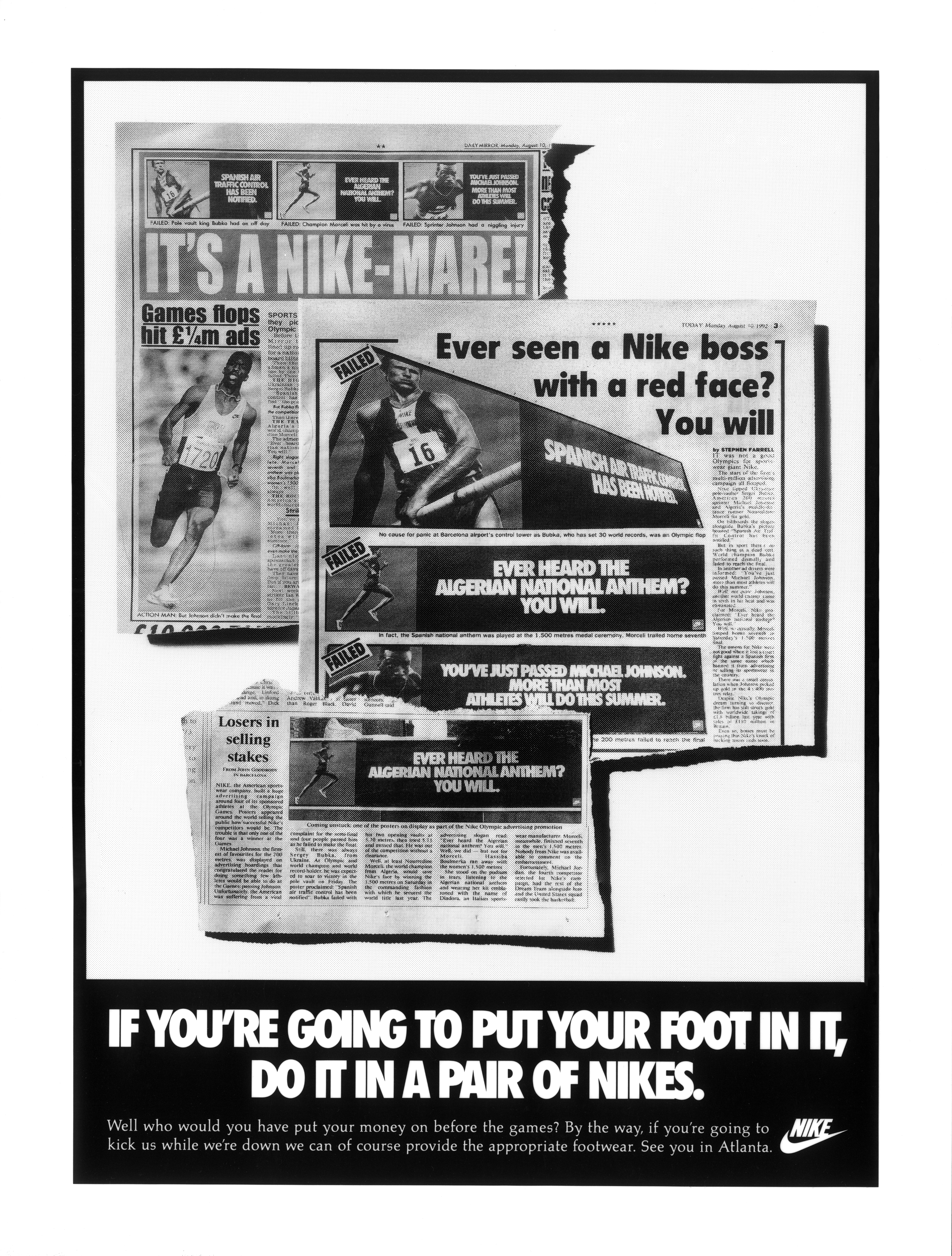 The campaign then really hits a peak, with the famous ‘Cobblers’ poster.
The campaign then really hits a peak, with the famous ‘Cobblers’ poster.
Didn’t you have something to do with this one Dave?
Then you push the art direction all over the map?
It wasn’t a conscious decision to keep changing the look of the Nike campaign I just found myself wanting to nudge it in different directions.
Of course it was important that everything hung together but tweaking the look kept it fresh.
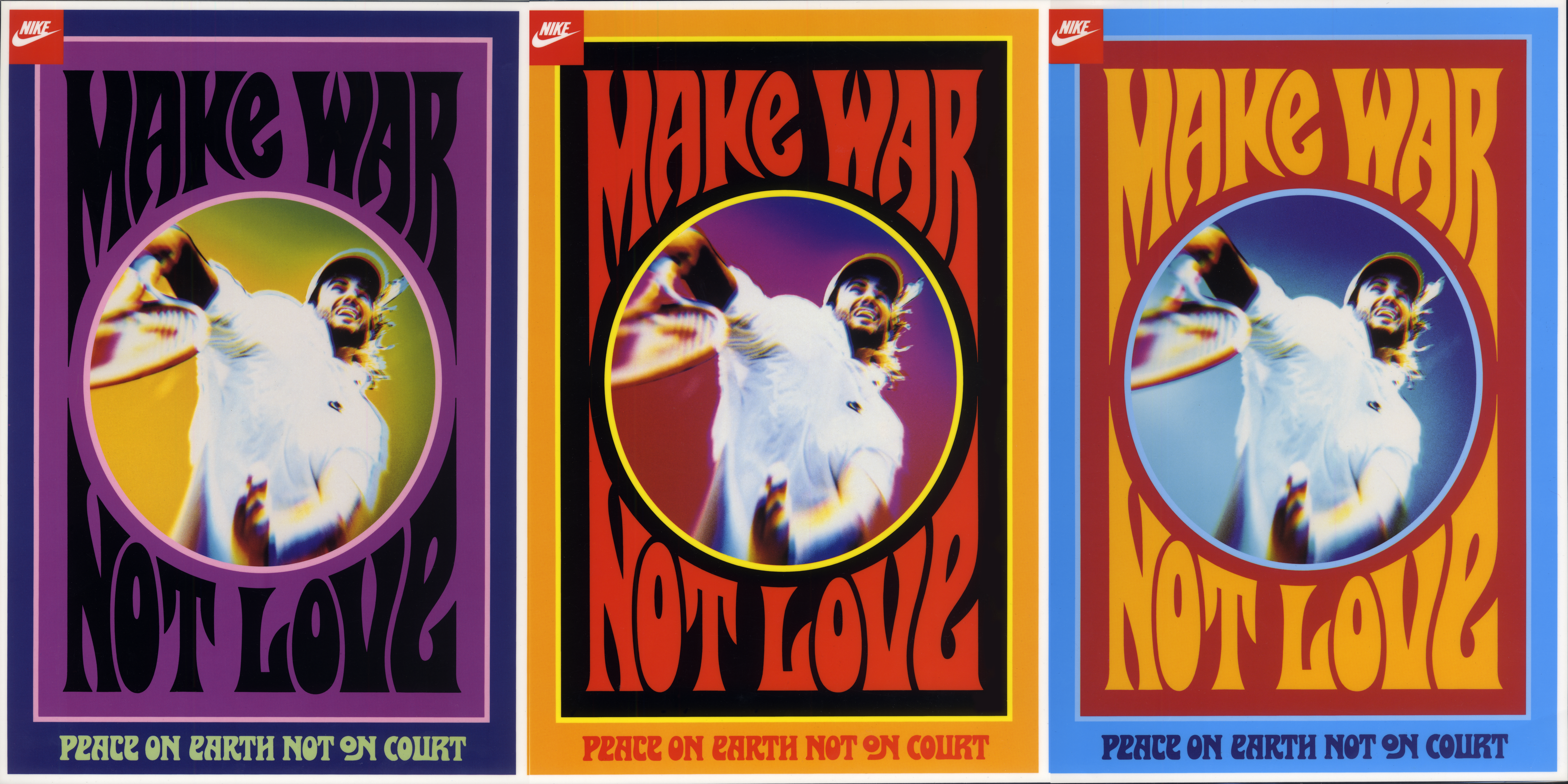






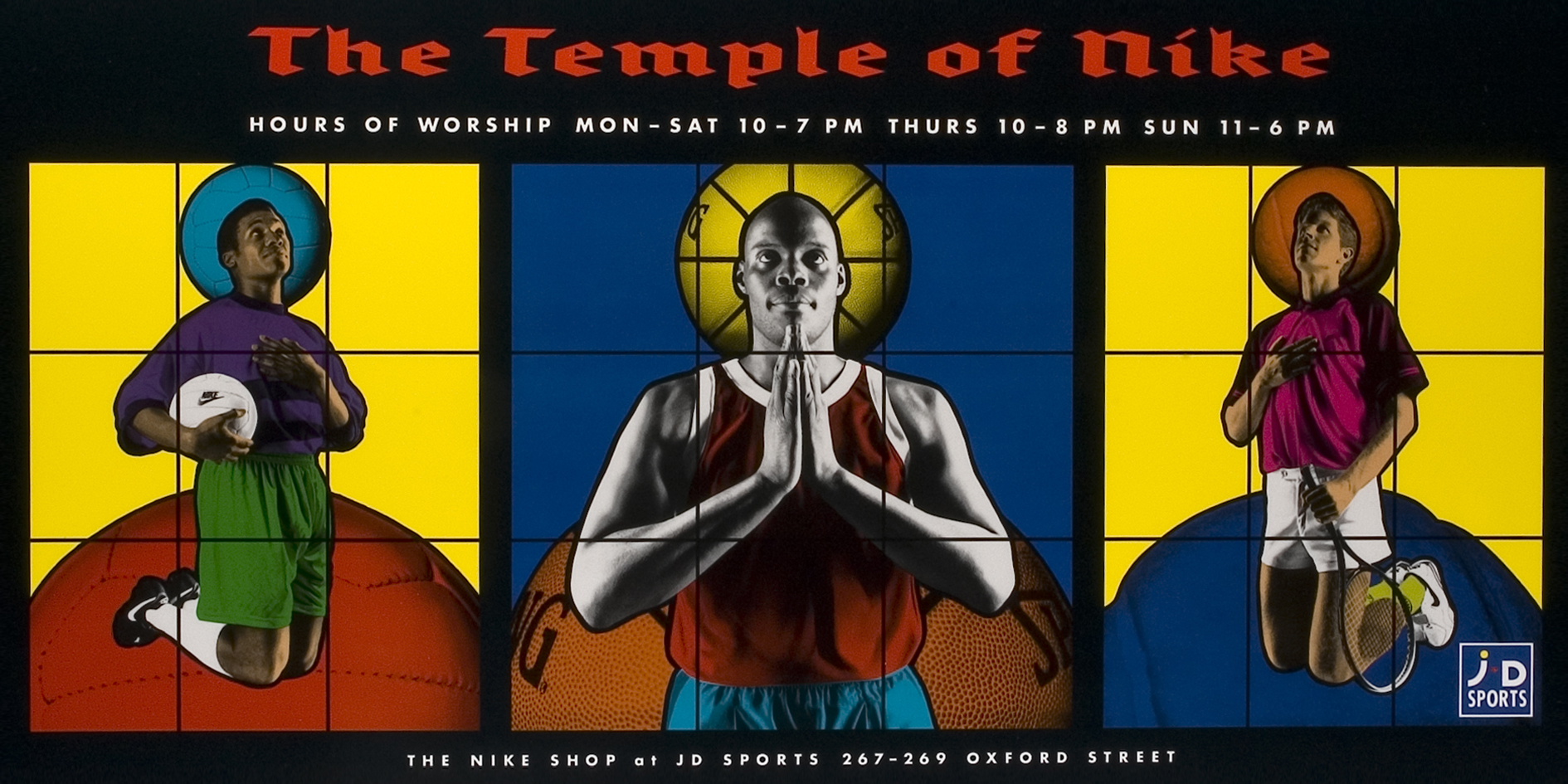
I remember showing you this rough…

…and you said ‘I like it, now do one that looks nothing like it’.
It ended up like this…
That’s unusual feedback?
I remember you presenting something that looked like a Nike ad, but I wanted all the Nike print to feel like they hung together, but were slightly different.
I think that was mainly because we still had so few clients that I would have been bored with just one look.
You shot three ads with Tony Kaye, probably a record at the time, but with the Nike ‘Kick It’ one, you were on the verge of tears when you saw Tony’s first cut, bad tears, not the joyful ones.
Tony had just started making a name for himself when we first met him. He’d recently cleaned up with his Solid Fuels ‘Cat, Dog and Mouse’ ad and had done some other really cracking work like ‘Abbey Endings’.
Me and Chris were alone working in Simons Palmer DENTON’s first offices, which were over a fish restaurant in Covent Garden, when we heard the front door bell ring; it was about 10.30 at night, so we both wondered who it might have been, given it was so late.
We opened the door and in bounds a very animated Tony Kaye.
I can’t remember exactly what he said, but he was so enthusiastic that when he left we both turned to each other and said ‘we’ve got to work with him’, (even though at that time we didn’t have many TV briefs knocking around).
I think the first opportunity presented itself when Greenpeace, they needed a three minute film highlighting the potential environmental problems facing Antartica.
There was bugger all budget, but Tony agreed to do it, fortunately.
It was like no other shoot I’d ever been on; exciting, disorganised, dangerous and emotional.
I remember Tony crying when our producer explained that the commercial had to be finished in time for an International conference on Antarctica.
I can’t remember if it ever got finished on time?
I loved the end result, but in all honesty I think I loved the process even more.
It gave me the kind of feeling in my testicles like when you go over a hump-backed bridge at high-speed, so we let Tony loose on our next ad too which was a hair and beauty ad for a shampoo. The end result was every bit as bad as the previous ad was good.
It seemed like Tony was a risky proposition, you either got magnificence or WTF!!!, nothing in between.
That’s why he was the obvious choice for our first Nike commercial – ‘Kick it’.
We wanted something that was going to blow everyone’s socks off, so despite the possible risk factor we were prepared to board the Tony Kaye roller coaster, for the thrill of it and the potential big rewards.
And he didn’t disappoint.
I’m not going to bother trying to explain the advertising idea in ‘Kick it’, no one would ever be able to work it out by watching the finished film.
As before, it was a fantastically exciting shoot, but we had a lot of fights along the way – trying to wrestle it to resemble the original script.
In the end I stopped fighting, I thought there was a danger that any forced compromise between Tony’s vision and ours would be less good.
I remember when the finished film was presented to the client, he said ‘this is nothing like the script that I bought’ and we said ‘No, but it’s good isn’t it’, he agreed and ran it.
We all won lots of awards and more importantly; I’d like to think that it contributed towards elevating Nike from the number two sports brand in the UK to the top spot.
There was actually a fourth ad we shot with Tony – for Wrangler, no one’s ever seen it, it was a speculative film which featured a black rodeo rider.
There was no budget, Tony just liked the script and jumped on a plane to Texas.
Only an early rough cut exists because unfortunately we lost the Wrangler account before it could be finished. Shame, I think it could have been one of our best bits of work.
One of the downsides of being a director is that I don’t get to work with people like Tony, I really miss that.
Marston’s Pedigree.
I only remember being allowed to enter your office once, what the hell went on in there?
Having a lock on the door was probably my idea and the polar opposite of all that’s in the management books. No one was allowed to disturb us in the morning up until 12.00.
No wonder they fired us.
The Sun.







You’re great with clients, but you didn’t deal with them much then?
I was nervous in meetings, Chris was exceptionally good at presenting so I had no reason to do the meetings then.
We fielded our best player. It’s only when I became a director and I found myself in pre-production meetings that I discovered that I was not only good in front of an audience but I actually enjoyed it.
Virgin Atlantic.
Wrangler.
The Wrangler campaign was very unusual at the time.
Levi’s had the sexiest advertising at the time and the lions share of the jeans market.
The number two brand, Pepe, were a long way behind.
And even further down the chart was Wrangler.
We did a lot of research with the target 15-25 year olds and they slagged off Wrangler mercilessly.
They hated the ‘W’ on the back pocket in particular, so rather than running away from the ‘W’ we chose to make it the hero of the campaign.
‘Be more than just a number’ not only encouraged the punters to be an individual and wear something other than Levi’s, it also pitched the ‘W’ against the number 501.
That was our theory anyway.
But everyone knows ‘it ain’t what you do, it’s the way that you do it’.
We knew that we couldn’t compete with Levis on their own turf, executionaly or budget wise, so we made our telly much grittier than theirs by setting it in a warts ’n’ all NYC, and by picking a soundtrack that Levi’s wouldn’t have gone anywhere near; ‘Crosstown Traffic’ by Jimi Hendrix.
The follow-up commercial was shot in black and white and was set in LA with an all black cast.
The accompanying poster campaign featured graphic interpretations of the letter ‘W’ just to get the youngsters thinking differently about the thing they said they hated about the product.
Before very long Wrangler were the number two brand and the advertising was getting talked about.
And then we parted company with the client, I can’t remember why now.
British Telecom.
How did a small agency pick up the biggest account in the country?
We wouldn’t have got anywhere near a pitch for the BT business if it hadn’t been for me and Chris having a reputation for writing ‘pilot’ commercials.
I’d always done speculative work ever since I was a visualiser at Burnetts.
After a few years working with Chris we calculated that we had shot a couple of million £’s worth of pilots; THT, Samson, Mail on Sunday, etc, etc, etc.
We’d won loads of awards as a result, including The Grand Award at NY Festivals, Golds at Cannes and BTA, D&AD pencils and a BAFTA. The lot.
The secret was to not only make them good, they had to be for a real client, one you could possibly sell the ad to when it was finished.
We were approached by one of the hottest ‘pop promo’ directing duos in town Vaughn and Anthea.
Despite the fact that they were knocking out extremely stylish promos for some of the top acts around at the time George Michael, Simply Red, etc, they couldn’t get arrested in Adland.
It was much harder to make the transition from music videos to adverts back then and they were desperate.
So desperate in fact that they gave us a ring and asked us to write them a pilot to put them on the map.
We had a word with Carl Johnson and said what client do we want?
He said that the biggest spenders next to the COI were BT, so before you knew it Simon (Clemmow) was doing some research and knocking out a brief for BT.
We write a bunch of scripts, give them to V&A and they take them home to have a ponder. The next week they were back in our office telling us that they like the scripts so much that they were going to shoot two of them.
(We didn’t know at the time that they mortgaged their flat to raise the money!)
The shoot went bloody well and the ads turned out even better than we expected.
Then we put the finished spots back into research, called up the BT client and to cut a long story short secured the lions share of the BT account.
Of course, always being one’s for paying back debts Vaughn and Anthea ended up shooting 11 commercials for us over the next year or so.
Why did you get kicked out?
We were awkward.
I would have kicked us out if I were the other partners.
I was only 31 when we started the business and I’d only been a proper art director for five years.
No one had taught me about the mechanics of the business and how to get along with people, I naively thought that if the work was good then everything would be ok.
What I didn’t realise was that when it all went pair-shaped for us I was holding a very good hand of cards, I just happened to play them badly.
Did you offers to stay in advertising?
After the SPDC&J experiment I didn’t fancy starting up again because I didn’t trust the process, so I thought I’d try my hand at directing while I decided what I wanted to do.
I can’t remember anyone offering me a job at the time so it was an easy decision.
Tell a lie, David Abbott called and we met him but I really didn’t fancy working for anyone else after I’d got a taste of being my own boss.
It’s interesting hearing you recount your journey, one nagging question remains; You’re the son of a scrap metal magnate and you have the words ‘MARK’ and ‘DENT’ in your name – that’s got to be deliberate?
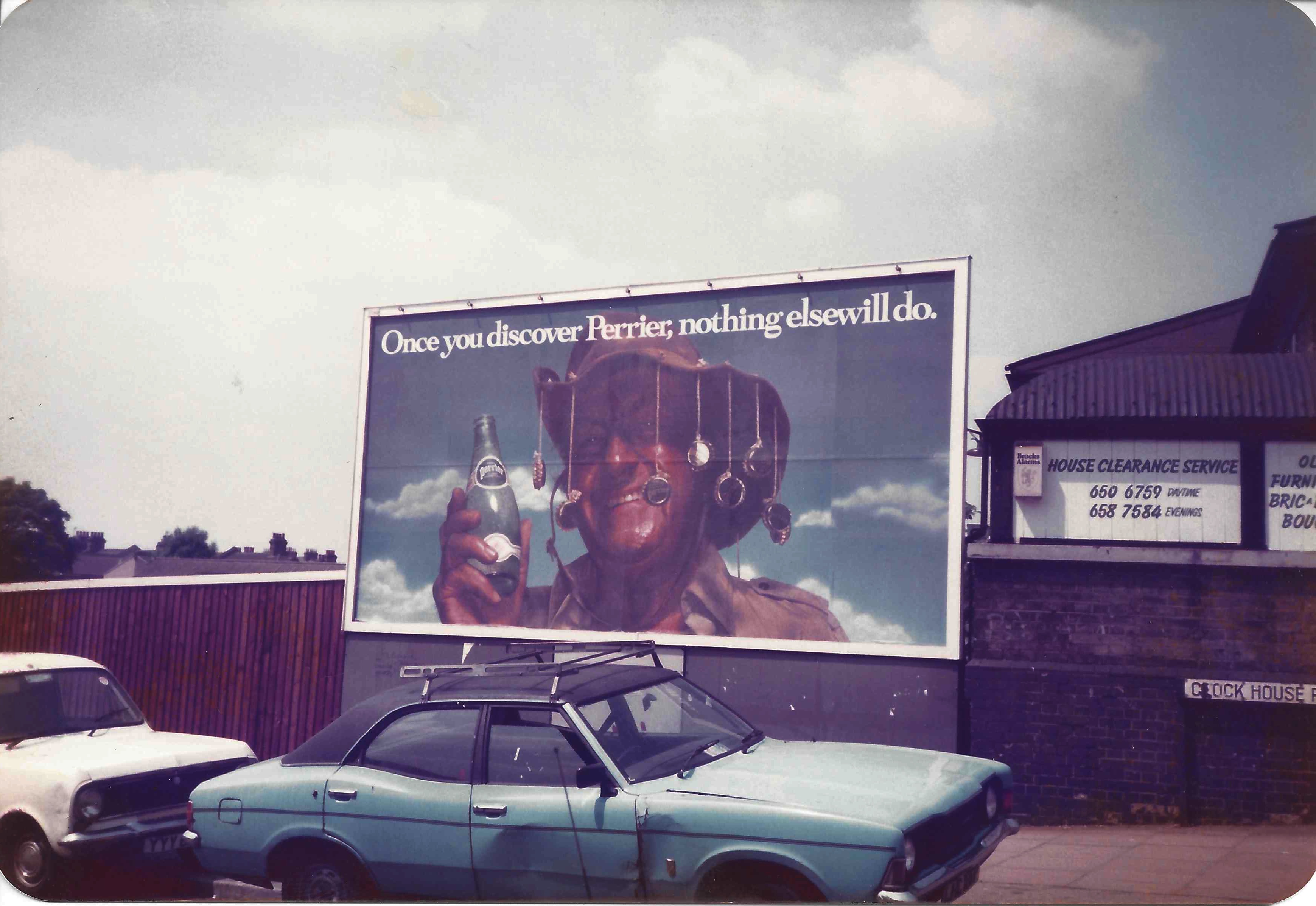



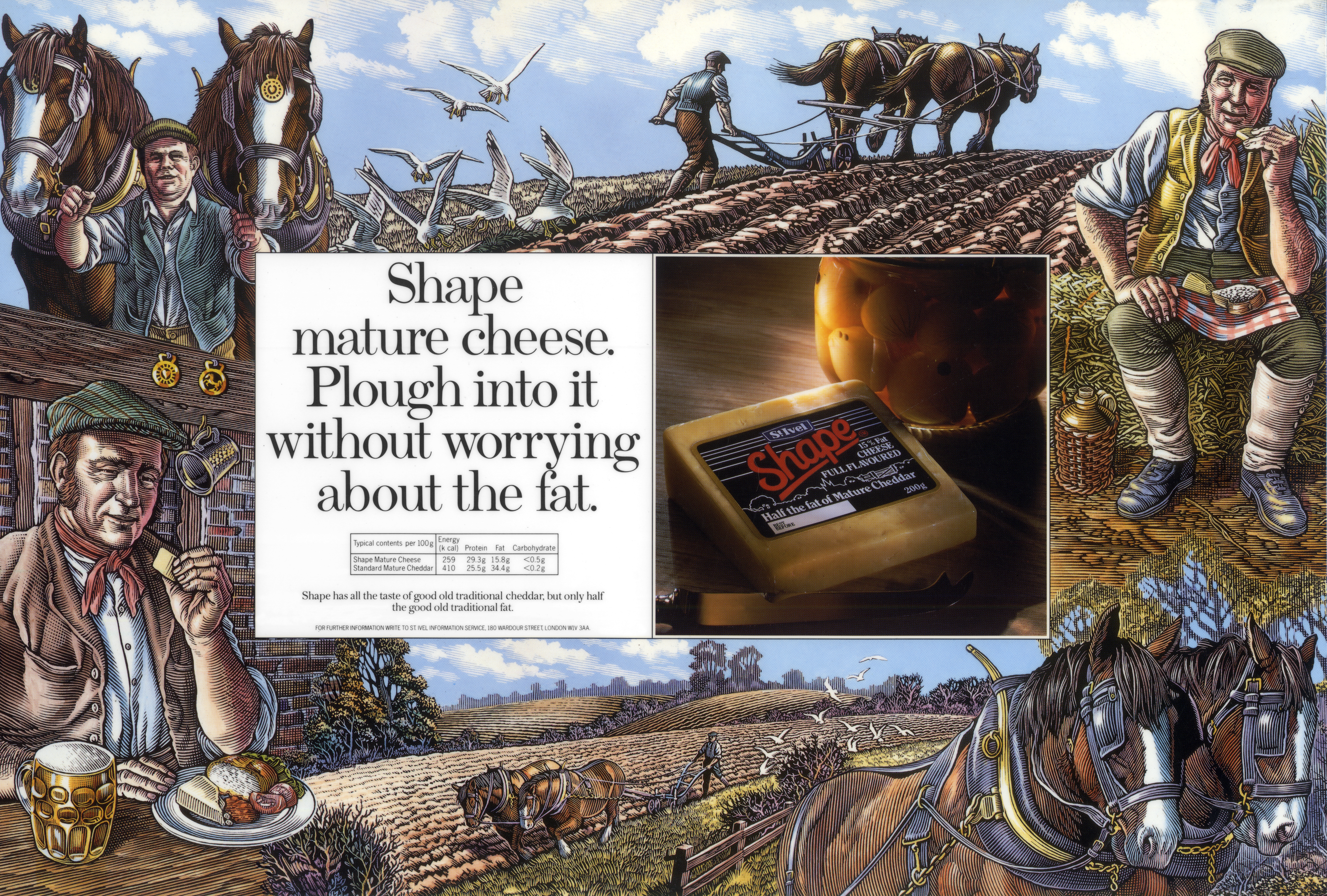





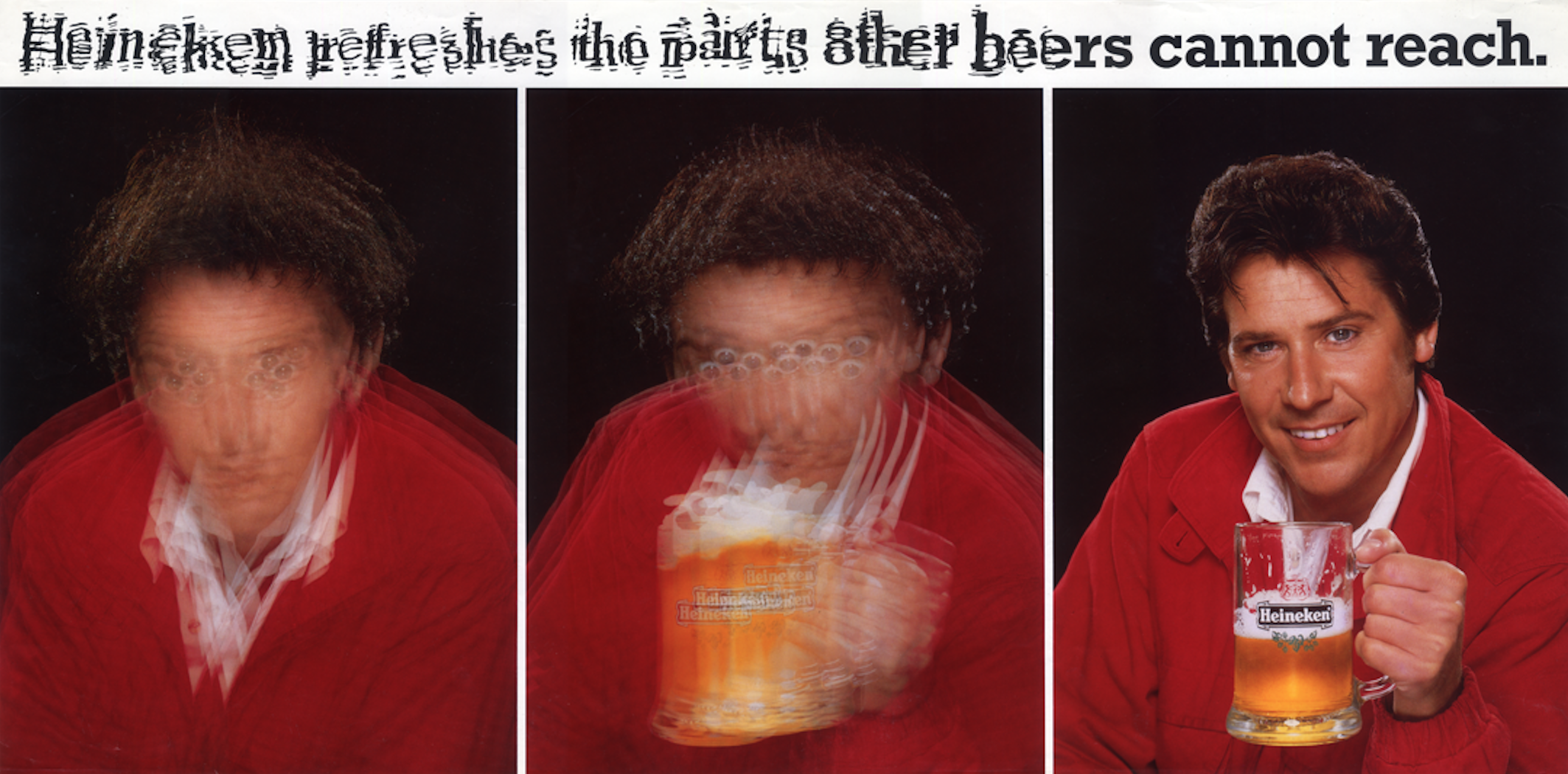

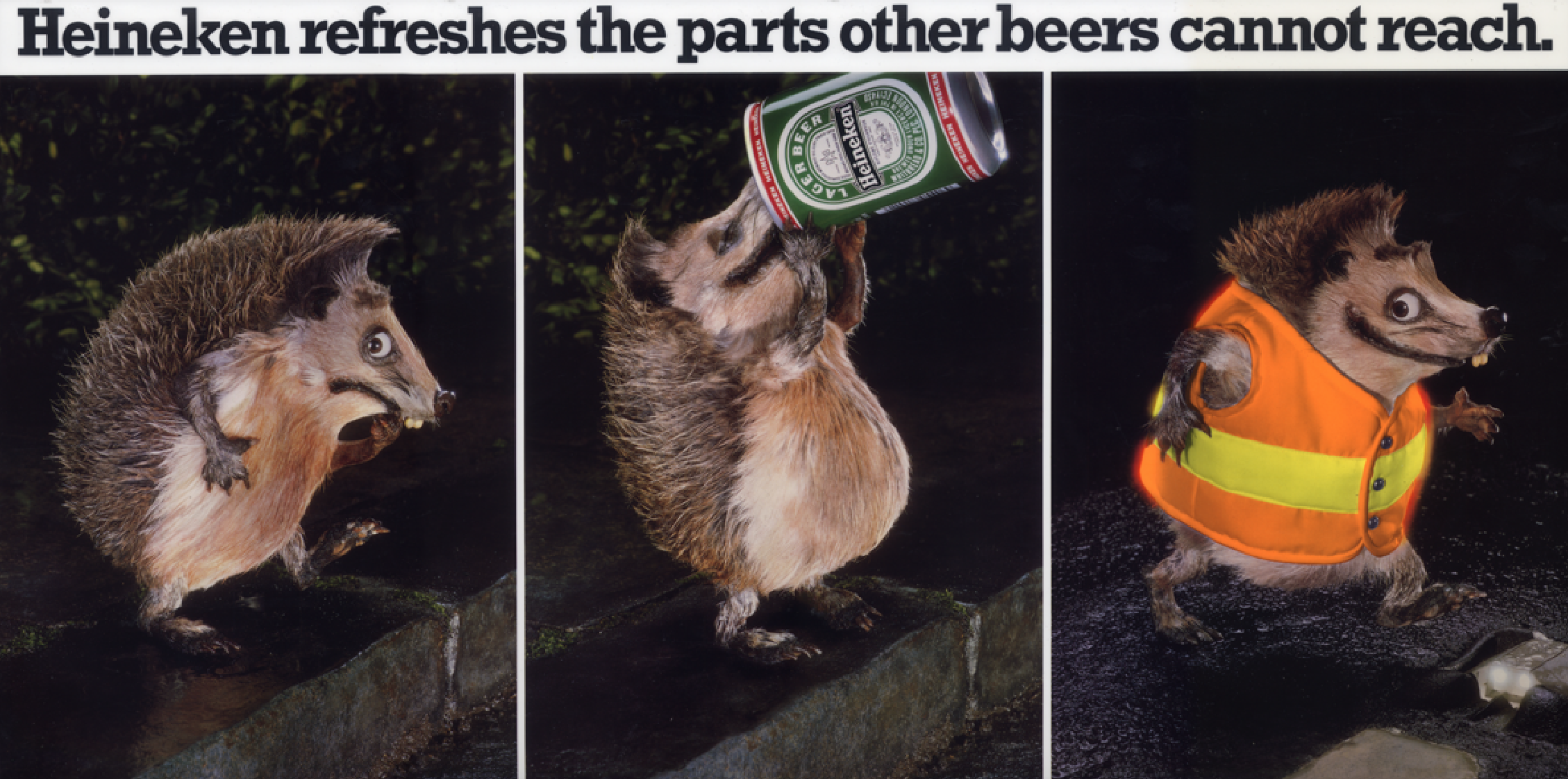





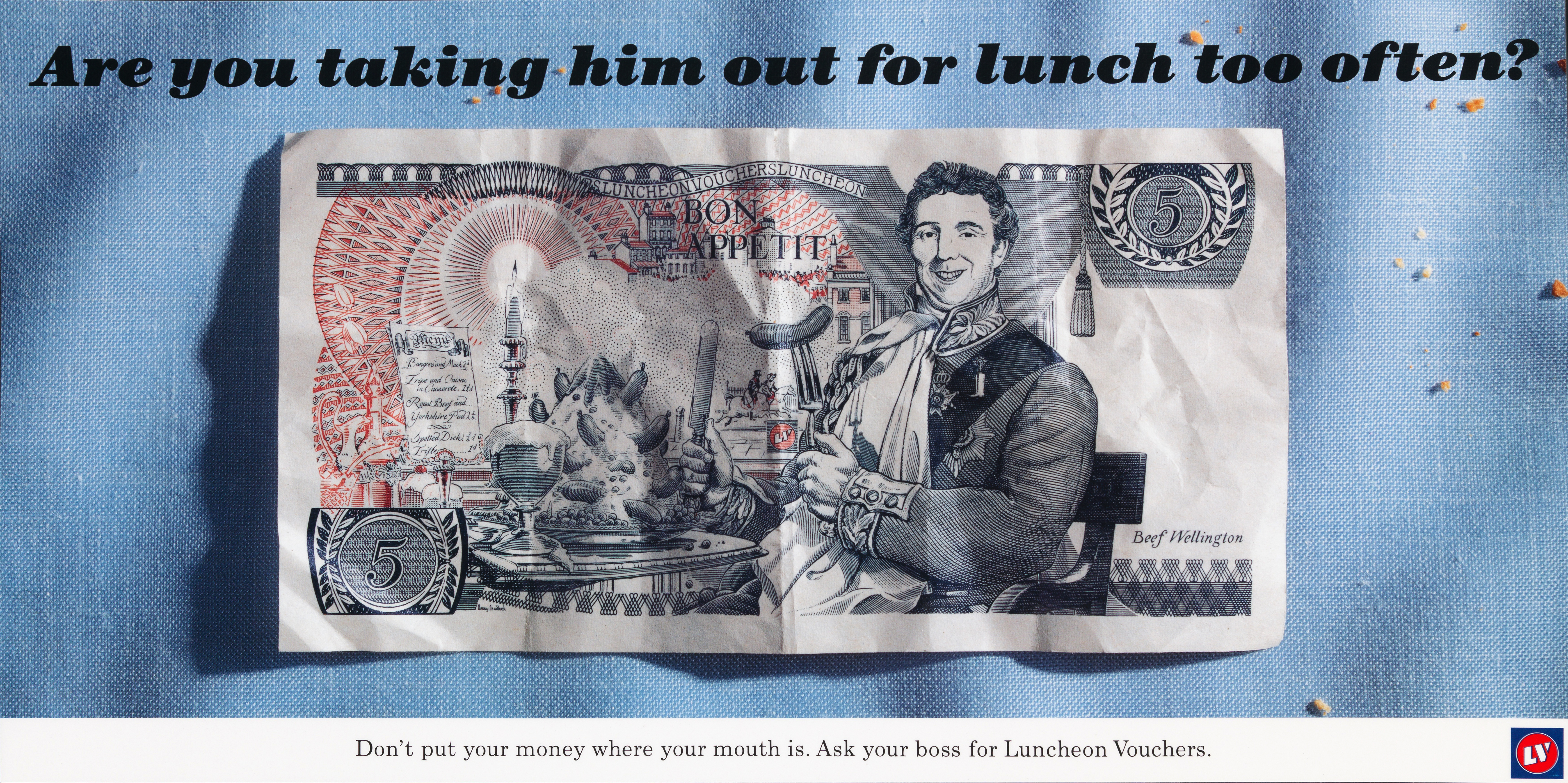


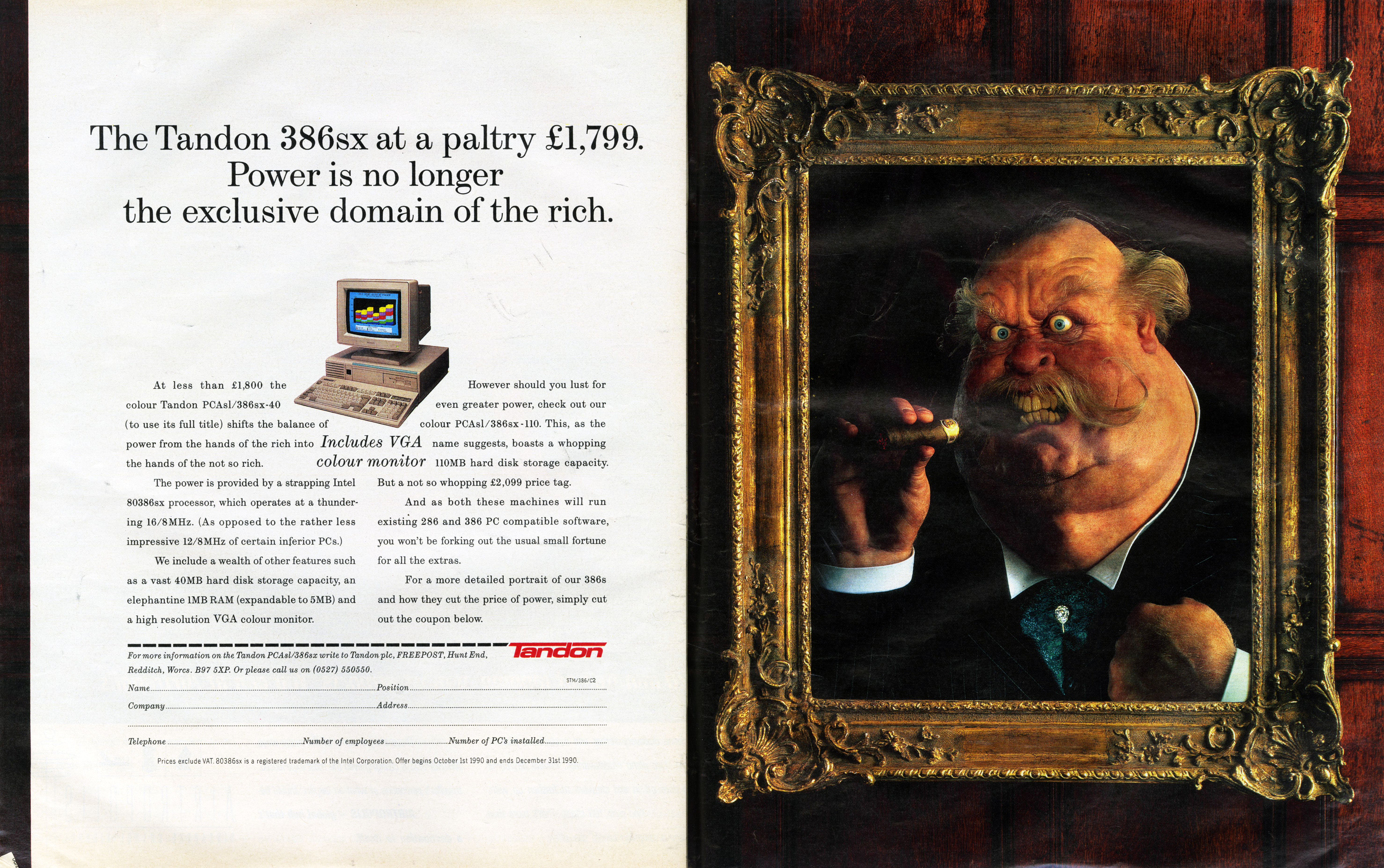






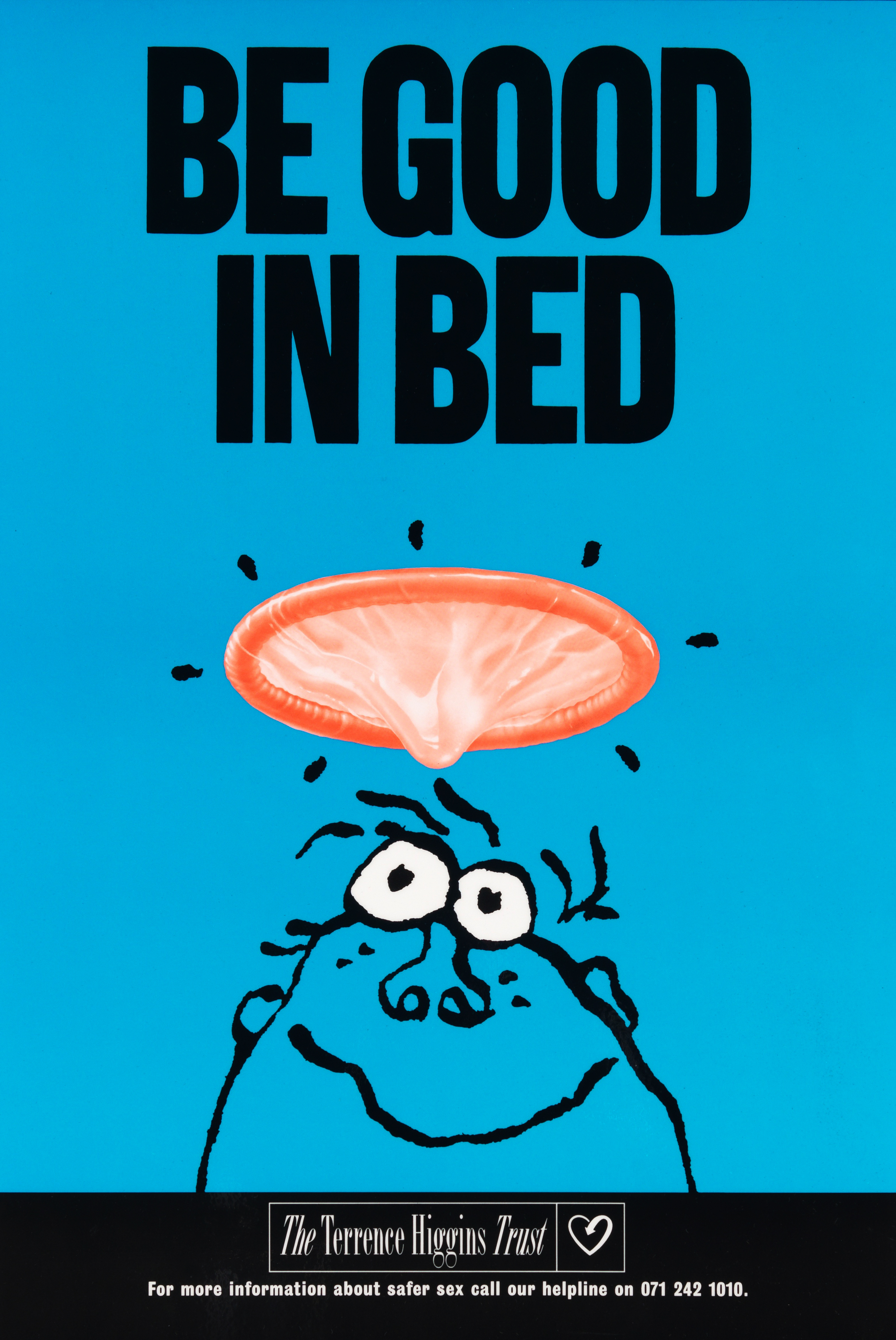



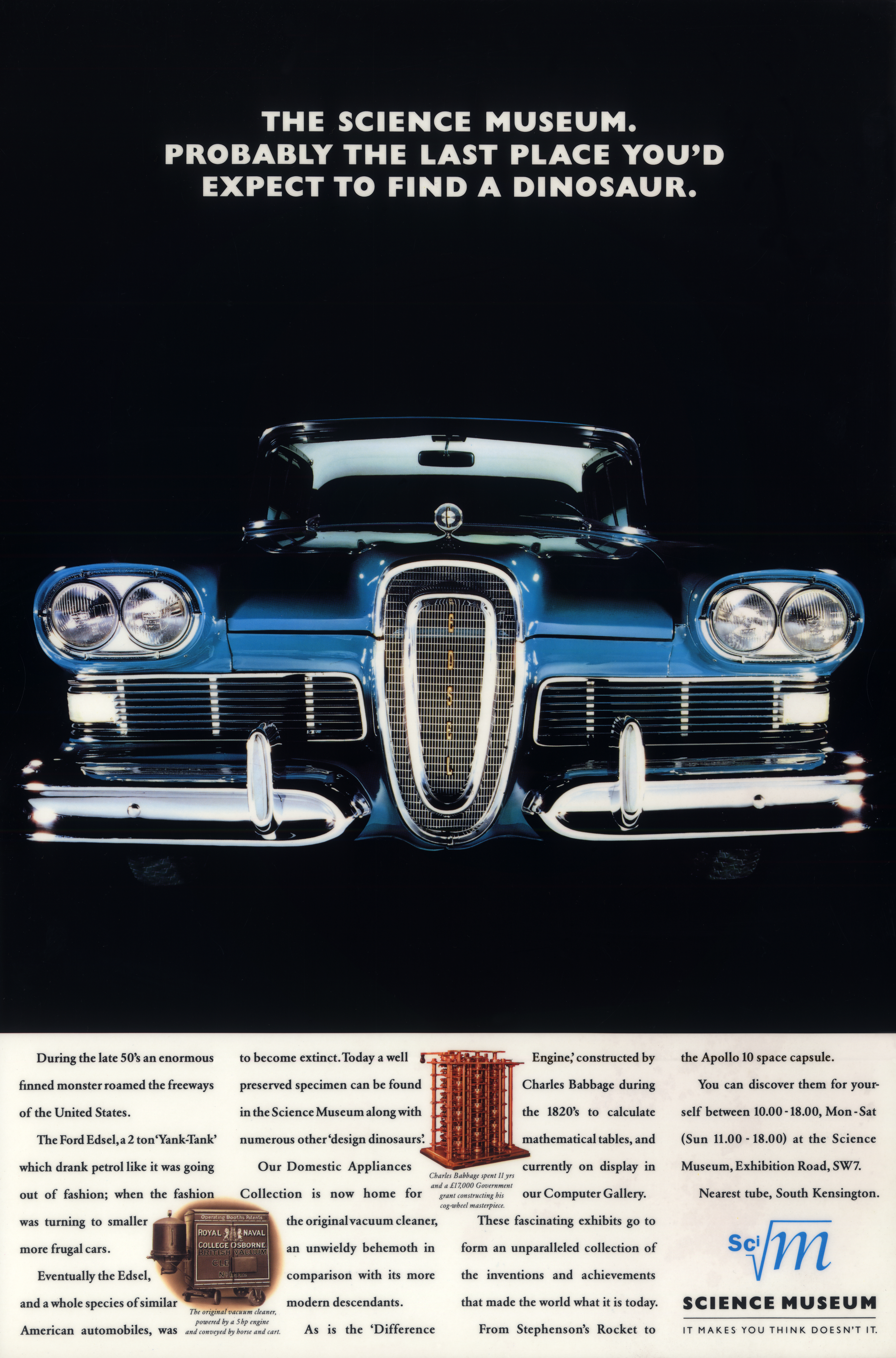
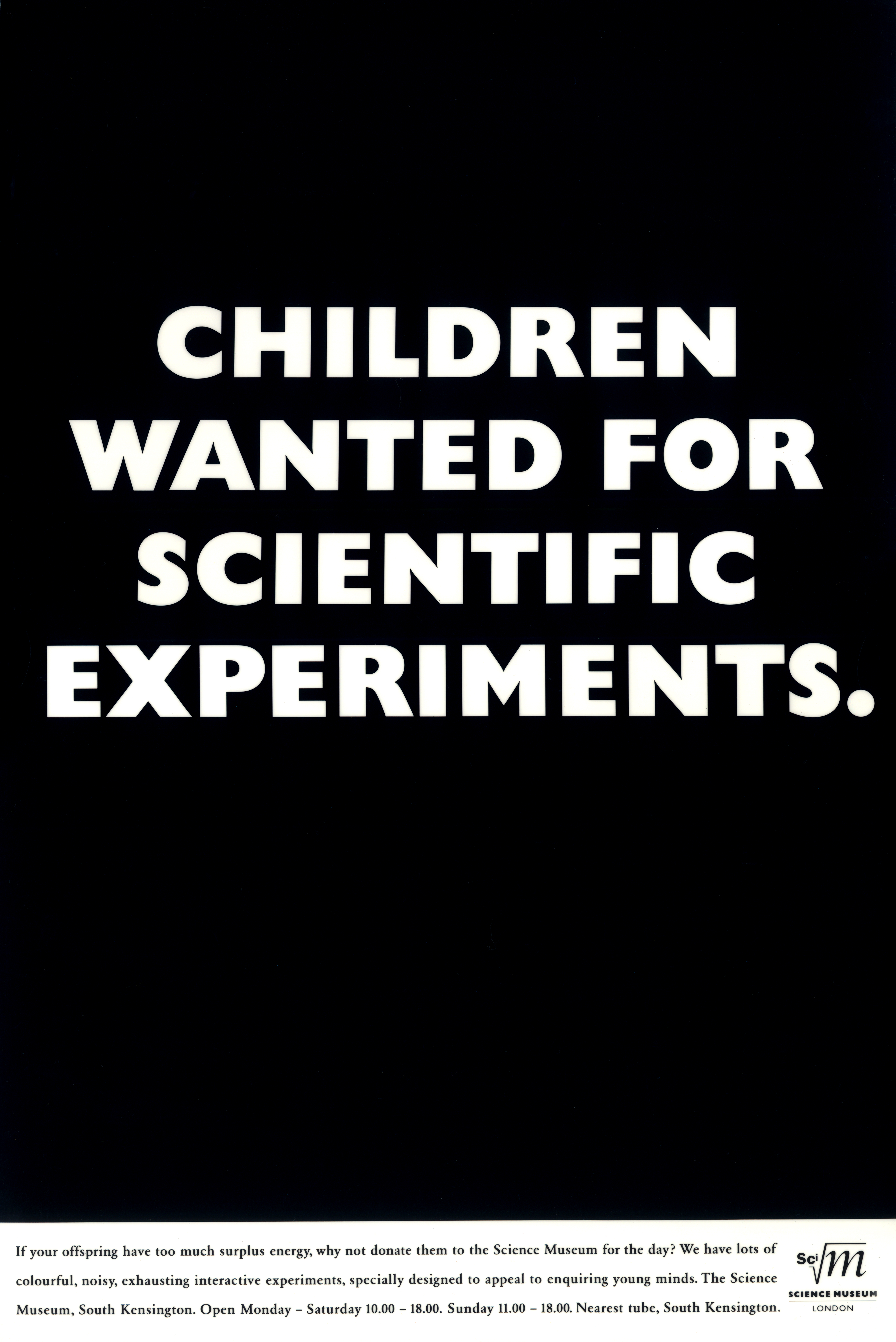



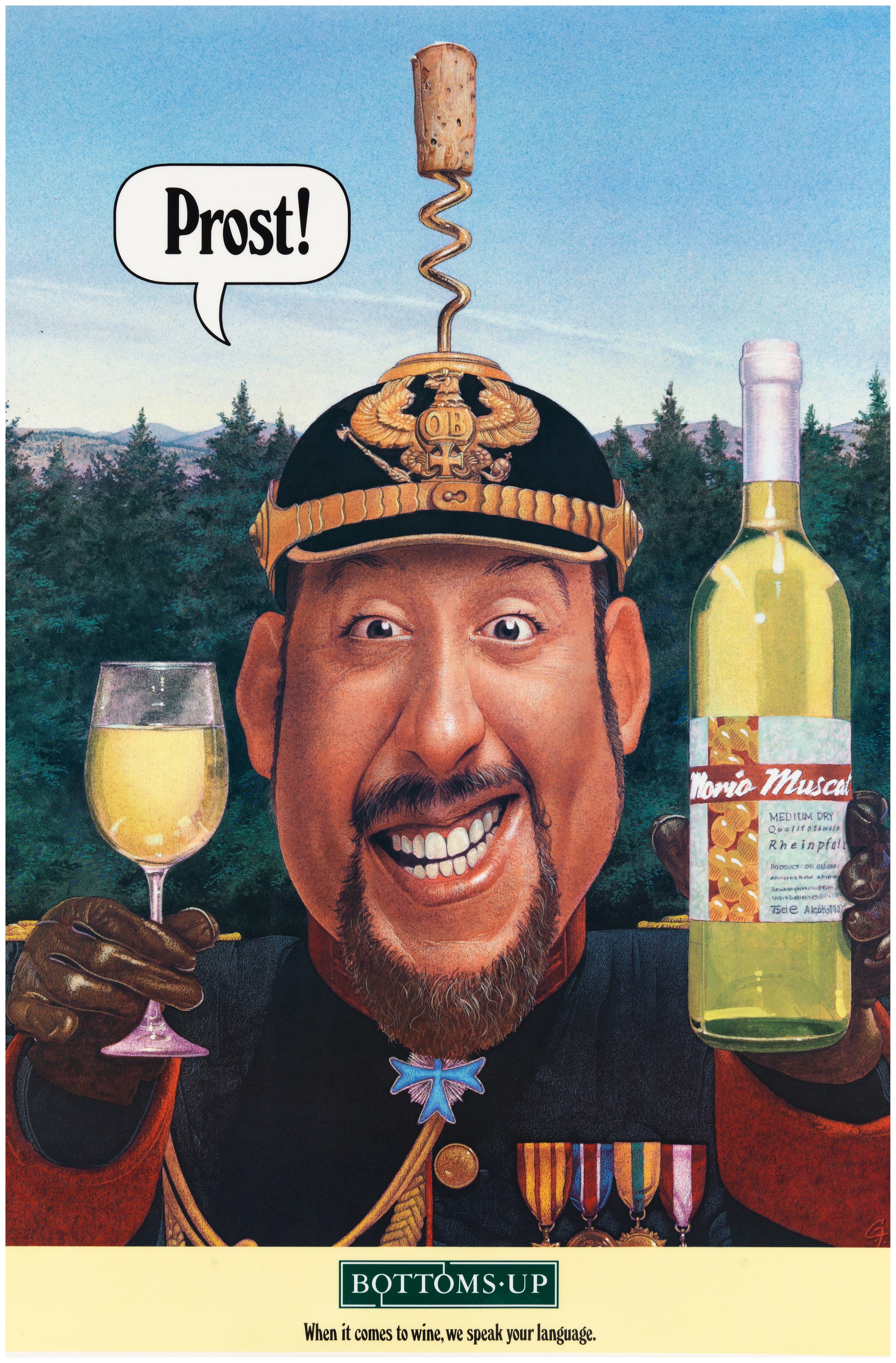








































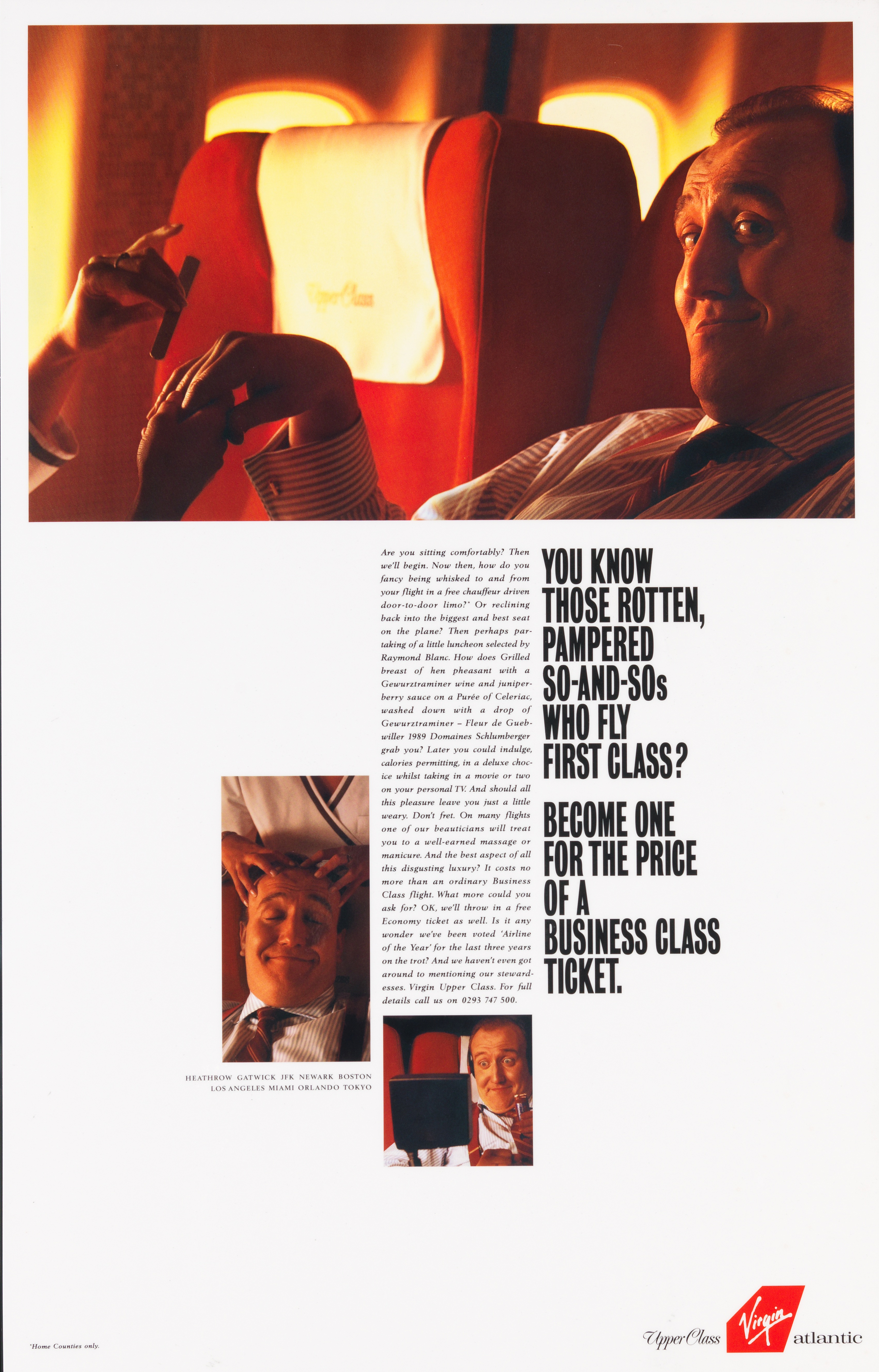





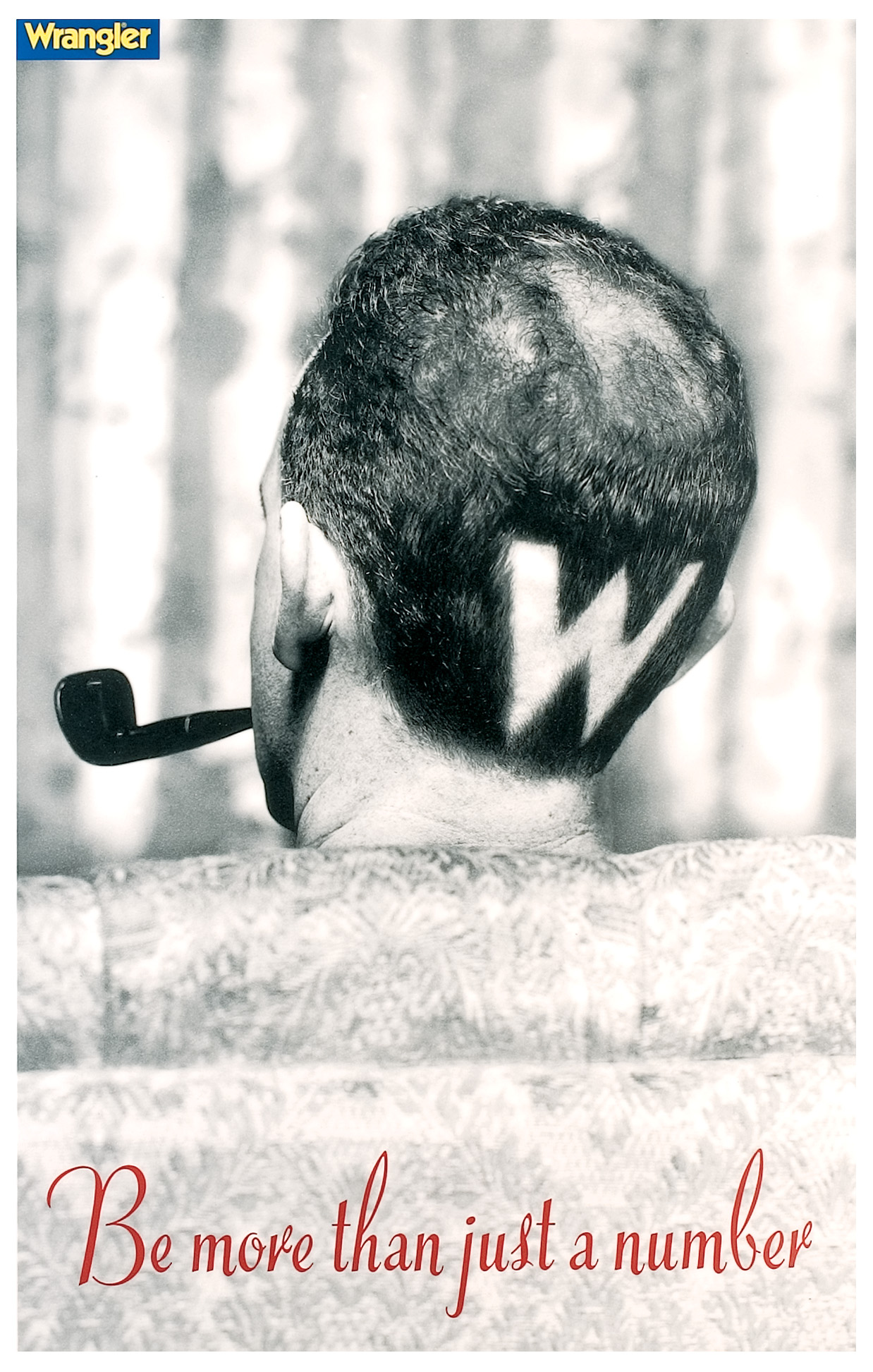








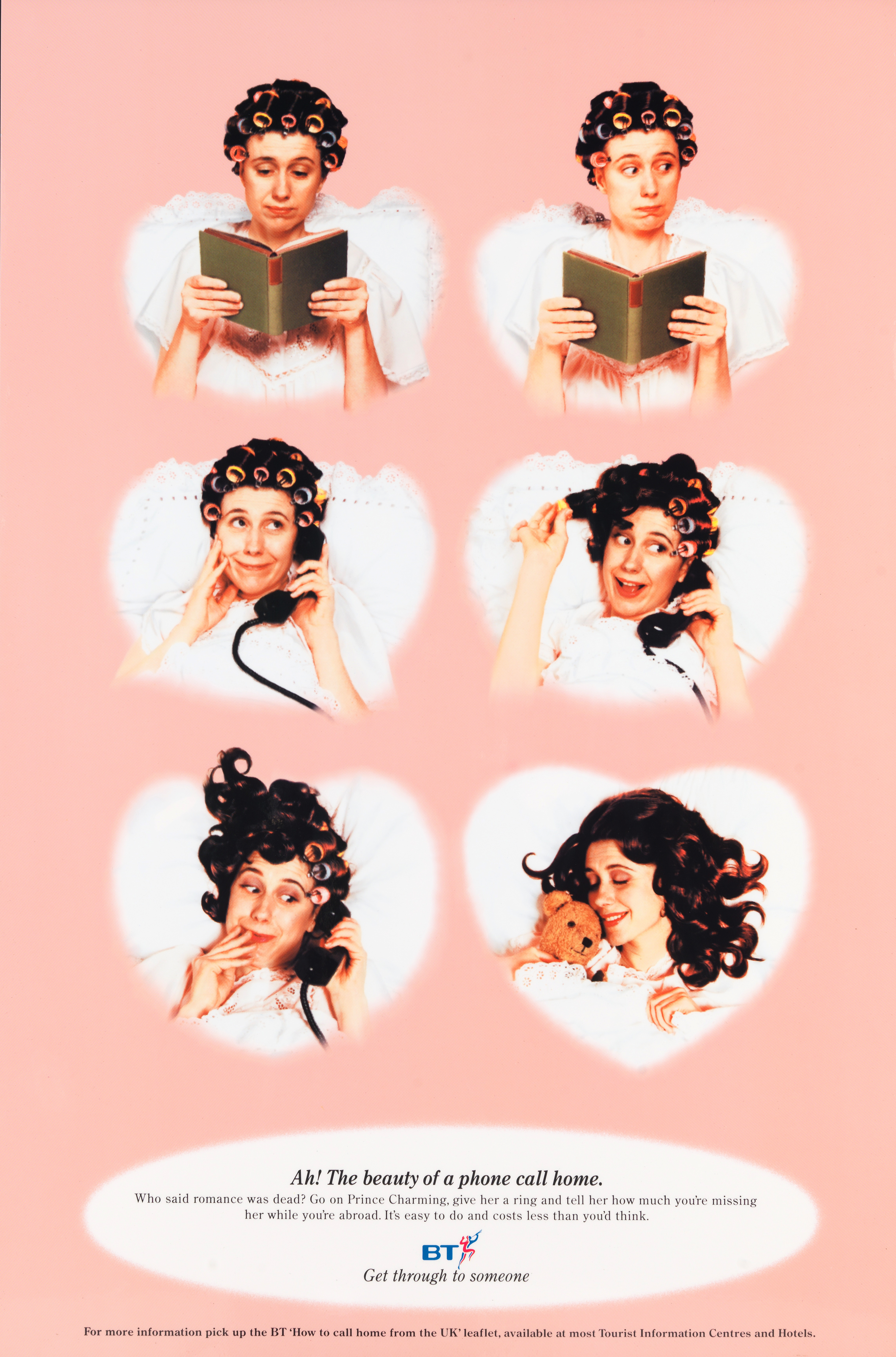
This is the best blog on art direction and advertising I have ever seen, I hope you will consider making the posts into a book so I can have all of them in one place!
Thanks Don,
If you know a decent publisher with a fat chequebook, let me know.
(Or a fat publisher with a decent chequebook, still let me know.)
Best,
D.
Dave
I’ll have a list for you by Thursday
It would be purchased by every ad school student and struggling Art Directors everywhere
D&AD should consider it too
Don
Sent from my iPhone
>
Mark ‘Beta is Better’ Denton’s work is great.
Yes. Wrangler black rodeo rider. We came home with a campaign, not a commercial. It was a portrait of America. But then… is that not what a pair of denim jeans are? I did not see it then. I saw nothing then other than trying to visualize energy and praying that God would get me the rest of the way. Now, I see today. Now. I see us all back then as preparing for today and now we really have to go to work. But not for ourselves but for the next generation. We have to somehow find our way through a layer of fragmentation today that is more invisible than the ozone layer yet holds more rewards than any paycheck or pat on the back. And if you understand what I just said please write to me at ——->
Many thanks for the post Dave. It goes without saying that the quality of the work at spDc&j was also down to the brilliant creatives that we had on the team. Tim Riley, Paul Silburn, Trevor DeSilva, Mark Goodwin, Sean Doyle, Keith Bickel, my Brother Adam, Andy Mackay, Tony Barry, Gary Martin, Warren Brown, Chris Bardsley, Paul White, Paul Diver, Keith Courtney, Tiger Savage, Guy Moore, Tony Malcolm, Barry Brand, John Tisdall and of course some bloke called Dave Dye.
It’s also worth mentioning that even though we didn’t appreciate it at the time we had the best salesmen that I’ve ever encountered in the industry in Carl Johnson and Mike Perry. To have account men working with you that cared just as much about the creative work is something I’d never seen before or since my time at the agency.
It’s funny how it all seems like five minutes and a million years ago at the same time.
It was a truly wonderful piece and brought back many memories of the best time in advertising. The comment about Carl Johnson so true who was a great account man when I worked with him – he just did it. Hope I wasn’t the one who handed back Mark’s book at GGT!
As an example of Marks’s uncanny ability to spot potential I thought I’d share my own story.
I left school at sixteen with no qualifications whatsoever, unless of course you count the dubious honour of being given detention more times than any other pupil in the school’s history.
I immediately started work at the old man’s scrap metal business. After twelve years , my future was pretty much mapped out. Or so I thought.
On a visit to the folks one day Mark spotted a Christmas card I’d sent them on the mantelpiece. Inside was a poem I’d cobbled together. I wasn’t in the habit of writing poetry I can assure you. I worked in a Peckham scrap yard for heaven’s sake. And if truth be told I couldn’t recite a single line from that poem now if I tried. I know it mentioned Christmas and maybe snow and definitely getting drunk down the pub; (more Pam Ayers than Keats obviously). I certainly had no illusions of it changing my life. Mum had already told me she thought the poem was good, but I didn’t really take a lot of notice. Mums have to say that. Mark on the other hand was an altogether tougher critic. ‘Good’, he said, when he next saw me, ‘Bloody good! How d’ya fancy knocking out a few scripts’.
Mark and Chris (Palmer) were starting to make a lot of noise in advertising at the time and were at Lowes working on the prestigious Heineken account. He presented me with a pile of their own Heineken ads for reference and told me to come back with some better ones. (No pressure then.) It was tough and of course the stuff I presented a week later was pretty rubbish by their standards but I loved it and the ads showed enough promise for Mark to persevere.
He encouraged me to take an English O level, I wasn’t keen, but was pretty chuffed when I got an ‘A’ bearing in mind I’d never passed an exam in my life.
The next step was a D&AD course. But there were only a limited amount of places available. You had to write an ad campaign to a set brief just to get accepted on it. Time wasn’t on my side, after all I’d never even attempted to write a press ad or poster. I’d have to wait months for the next stab at it.
‘Don’t worry about getting in, it’s a cast iron certainty (no pun intended) said Mark. ‘ Me and Chris are gonna do the ads for you’.
The brief was for ‘Lockets’ throat sweets if I remember rightly. When the rejection letter arrived a few days later they could have done with some, as it looked like they’d swallowed something jagged after reading the bad news. I’m not sure who was the more disappointed. Don’t think it had too much of an adverse effect on their career though, unbeknownst to us they’d be running their own successful agency in a matter of months.
It didn’t do my prospects much harm either. Not much more than a year after Mark spotted that poem and around my 30th birthday I was proud owner of a Creative Circle Gold for best new beginner and working as a copywriter at O&M..
Thanks Mark, I guess you really did save me from the scrap heap.
What an amazing collection of wonderful work – most of which I remember being charmed and/or inspired back in the day. A great way to start my morning. And yes, a great blog too – keep ’em coming!
Keep on keepin’ on with these Dave. Brilliant to keep reminding me what advertising was like before DIG-I-TAL came in through the back door sneaking CONTENT into the vocabulary. Makes me feel old, but probably because I am.
I really miss chatting to my Dad about his career in advertising, who coincidentally worked at CPV and your wonderful blog brought back some lovely memories. He knew everyone in the industry in the 60s and 70s, eventually setting up his own agency, Francis Associates, initially in two penthouse flats in the Leo Burnett building in St Martins Lane.